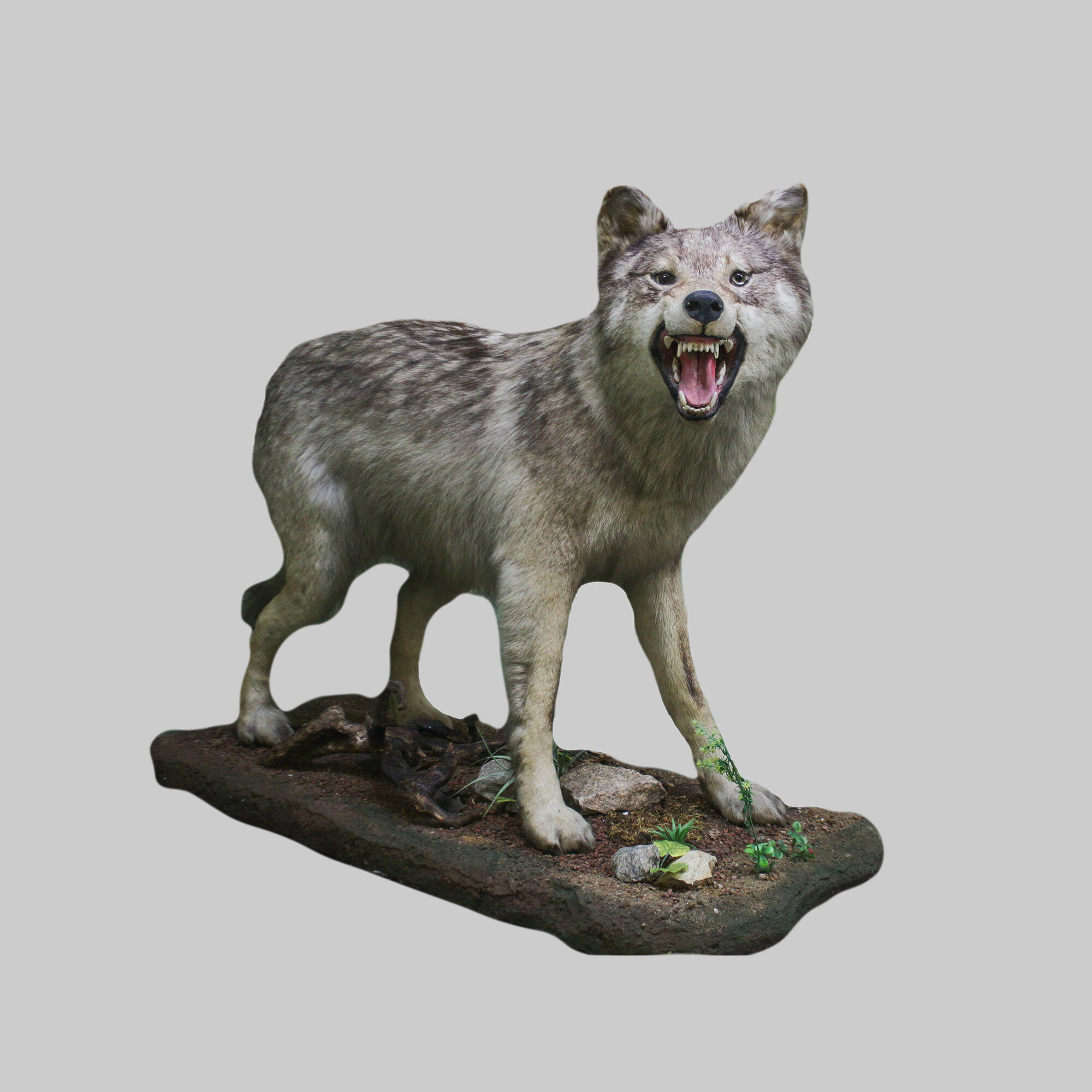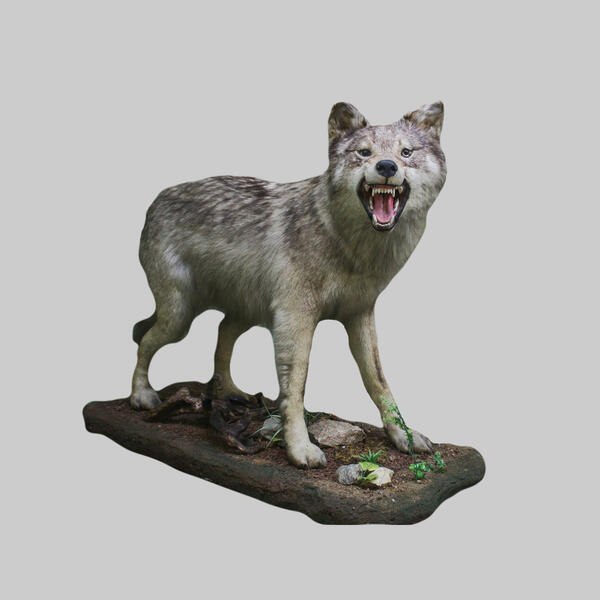The wolf is the most common land predator. About 32 wolf subspecies differing in size and fur color exist today. The colder the climate, the bigger are the wolves living in it. The wolf’s fur color is also affected by its habitat: their coats become gray and brown in the forests, almost white in the tundra, gray-reddish in the deserts, and white in the Arctic. There are also red and almost black animals. They have an average body length of 110 to 160 centimeters (without the tail) and a withers height of up to 90 centimeters, and weight up to 90 or 100 kilos.
The wolf is a social animal. A pack can consist of thee to 40 individuals. Wolves have a sharp hearing, which allows them to hear the howls of other wolves from up to seven kilometers. The wolf’s sense of smell is 100 times stronger than that of humans: they can smell prey at a distance of up to three kilometers and distinguish about 200 million scents, while humans can recognize only five million scents. Wolves can run at the maximum speed of 55 to 65 kilometers per hour. They can run for 20 minutes without stopping. When hunting, they move on the tips of their paws, which allows them to stop and turn quickly without damaging the pads. Wolves are also great swimmers and can swim up to 13 km.
Their howls allow them to communicate with other wolves. Since these predators are nocturnal, they prefer to howl in the late evening hours or early in the morning. Wolves howl the most in winter, when the pack size reaches its maximum.
The wolf needs about 3–4.5 kilos of meat per day. If the animal is very hungry, its stomach can hold up to 10 kilos of food. In summer, wolves sometimes eat fruits, berries, and even mushrooms. Wolves can survive without food for more than two weeks. Occasionally, during the most hungry and cold winters, they attack hibernating bears in dens.
When they don’t have small cubs, wolves roam from place to place. They can cover up to 60–80 kilometers per night. Newborn wolf cubs always have blue eyes. They turn yellow by the age of eight months.
Due to their nomadic lifestyle, wolves may become carriers of such dangerous diseases as brucellosis, tularemia, listeriosis, anthrax, and rabies. Once the first symptoms of the disease manifest, the sick animal leaves the pack. Wolves leave on average 12–15 years in the wild and up to 20 years in captivity.
The wolf is a social animal. A pack can consist of thee to 40 individuals. Wolves have a sharp hearing, which allows them to hear the howls of other wolves from up to seven kilometers. The wolf’s sense of smell is 100 times stronger than that of humans: they can smell prey at a distance of up to three kilometers and distinguish about 200 million scents, while humans can recognize only five million scents. Wolves can run at the maximum speed of 55 to 65 kilometers per hour. They can run for 20 minutes without stopping. When hunting, they move on the tips of their paws, which allows them to stop and turn quickly without damaging the pads. Wolves are also great swimmers and can swim up to 13 km.
Their howls allow them to communicate with other wolves. Since these predators are nocturnal, they prefer to howl in the late evening hours or early in the morning. Wolves howl the most in winter, when the pack size reaches its maximum.
The wolf needs about 3–4.5 kilos of meat per day. If the animal is very hungry, its stomach can hold up to 10 kilos of food. In summer, wolves sometimes eat fruits, berries, and even mushrooms. Wolves can survive without food for more than two weeks. Occasionally, during the most hungry and cold winters, they attack hibernating bears in dens.
When they don’t have small cubs, wolves roam from place to place. They can cover up to 60–80 kilometers per night. Newborn wolf cubs always have blue eyes. They turn yellow by the age of eight months.
Due to their nomadic lifestyle, wolves may become carriers of such dangerous diseases as brucellosis, tularemia, listeriosis, anthrax, and rabies. Once the first symptoms of the disease manifest, the sick animal leaves the pack. Wolves leave on average 12–15 years in the wild and up to 20 years in captivity.



